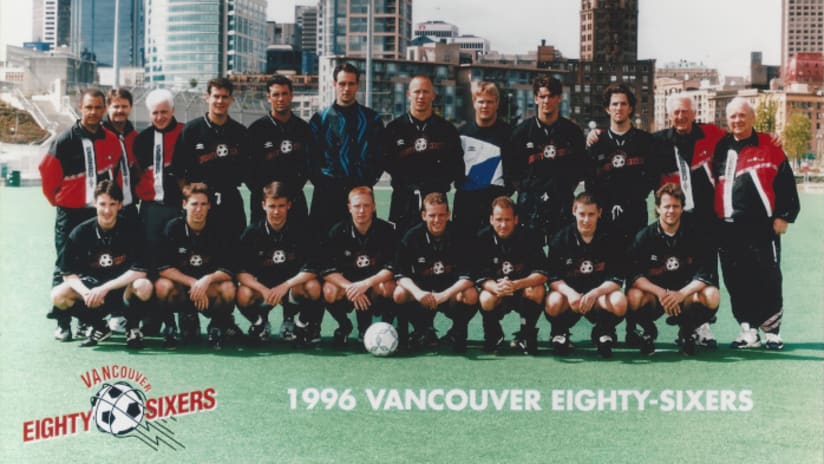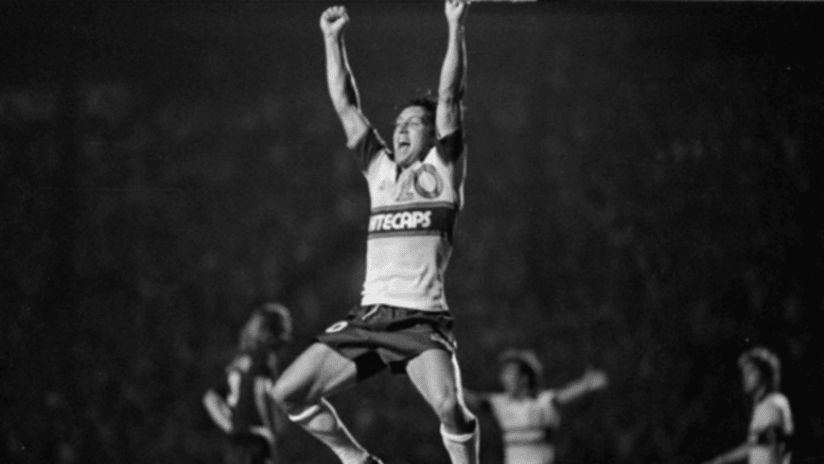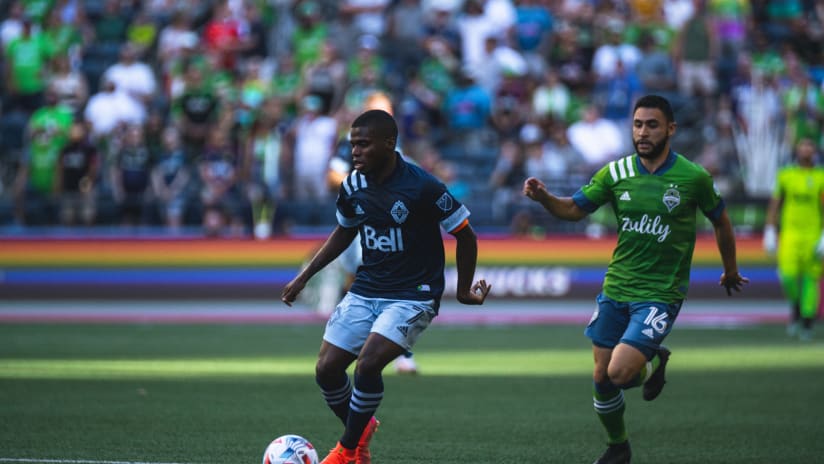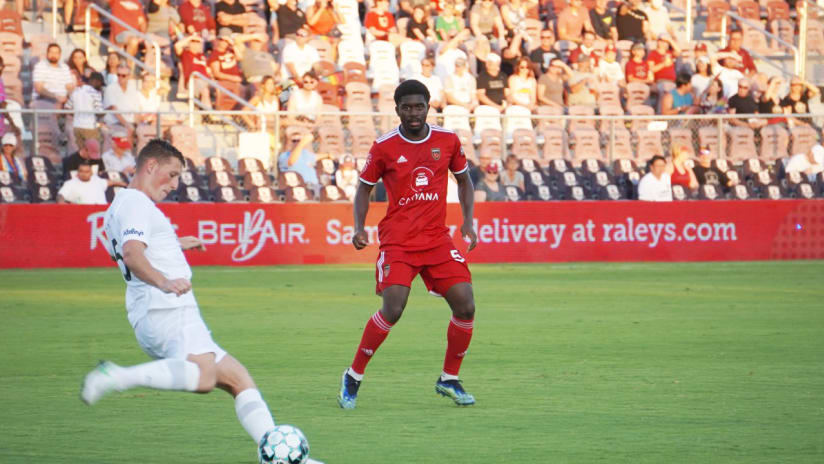Celebrate the club's '90s Match, presented by MNP, this coming Saturday, September 14 as Vancouver Whitecaps FC host San Jose Earthquakes at BC Place!
“Without the Vancouver 86ers, there probably wouldn’t have been a Vancouver Whitecaps.”
Those are the words Carl Valentine used to describe how important the Vancouver 86ers were back in the ‘90s.
Valentine himself played and coached for the 86ers from 1987 to 1999, along with goalkeeper Paul Dolan and midfielder Nick Dasovic.
“Our team was stacked,” said Dasovic. “The amount of players that were groomed here and played for the 86ers was incredible.”
Throughout the ‘90s, the 86ers played in bold red, black and white jerseys.
“We had many achievements during those 86ers years,” said Valentine, “In the 90s we had the black and red uniforms, which we felt were intimidating and stylish. If you look at the 86ers jerseys they were all pretty unique compared to anywhere around the world and that jersey was certainly unique.”
During the 86ers era the team played in a total of three different leagues and hosted most of their home matches at Swangard Stadium in Burnaby, BC.
First up was the Canadian Soccer League (CSL), which began play in 1987.
The 86ers showed utter dominance during their time in the league, winning four consecutive league titles and finishing atop the regular season standings five times.
“We were such an exciting team, lots of quality on the field,” noted Valentine. “We went out and attacked every game, home and away, and it was a lot of fun to be involved in. Winning the championships was the icing on the cake.”
In 1990, the team also added a North American Championship to their trophy cabinet, a game which pit the CSL champion against the American Professional League (APSL) champion.
86ers striker Domenic Mobilio scored an extra time winner to give the 86ers a 3-2 win over the Maryland Bays and the North American Championship in front of a jam-packed crowd at Swangard.
“It was maybe the best game the 86ers ever played,” said Dolan, “It really was the best of Canada against the best of the U.S., and a lot of players from that game went on to play in Major League Soccer.”
Despite all the good times for the 86ers, some moments of uncertainty were upcoming.
With the CSL and most of its teams facing financial challenges for long periods, the league eventually folded in 1992.
This left the 86ers without a league to play in.
“It was a scary moment,” recalls Valentine. “The league was struggling, teams were folding, so it was like what’s going to happen?”
The moment of uncertainty was brief for Valentine and his teammates, as the 86ers were able to find a new home in the APSL.
“It was an excellent, high quality league,” remembered Dolan. “The reason it was so good is because it had different American markets and a bunch of quality from both American and Canadian national teams since there was no MLS at the time.”
“It was exciting, because there were obviously some new opponents and a lot of good players in the league at the time,” added Valentine.
Fast-forward to 1996, the APSL was now known as the A-League and housed seven different teams from both Canada and the United States.
However, while the 86ers were keeping their legacy alive, soccer in North America was evolving. With momentum from the 1994 FIFA World Cup in the U.S., a new high calibre league was launched across the border as Major League Soccer officially took to the pitch with 10 teams.
“MLS at that time was a league that was strictly in the U.S.,” explained Dasovic. “For us Canadians at the time, we continued to play in the A-League.”'
While MLS played its inaugural season gathering plenty of attention from football fans alike in North America, the 86ers focused on making themselves the best small-league club in the world, as Valentine put it.
“We weren’t playing at a big-league level, we were playing at the next level, but we wanted to be the best,” said Valentine. “We wanted to be the biggest small franchise in the world.”
Valentine, Dolan, and Dasovic all say the fans were a big part of growing the footballing culture in Vancouver during the ‘90s.
“It was brilliant playing in front of the fans. Swangard was such a wonderful setting, the atmosphere was fantastic. They really were good times,” said Valentine.
“We had terrific, supportive crowds. We all loved it and we all felt that home field advantage because of it,” added Dolan. “I think the best part is having been a kid going to games and then playing on your hometown team with the support we got. It was phenomenal.”
“It’s a rich soccer community,” beamed Dasovic. “Growing up in East Van, being a supporter of the team as a kid, there was no doubt being a part of the organization was big for me.”
Valentine also mentioned how the era helped paved the way forward for the club playing in MLS today.
“It’s magic really. You look at the birth of the Southsiders with the 86ers and what they are now. They used to be behind the goal, maybe 20 or 30 Southsiders there, and it’s grown so much.”
“When we opened up in MLS and it was 21,000 people in the seats, that moment said that the fans wanted the Whitecaps at a major league level. It shows that the ‘90s era was important and now everyone’s reaping the benefits of that.”
This story was originally posted in April 2021




